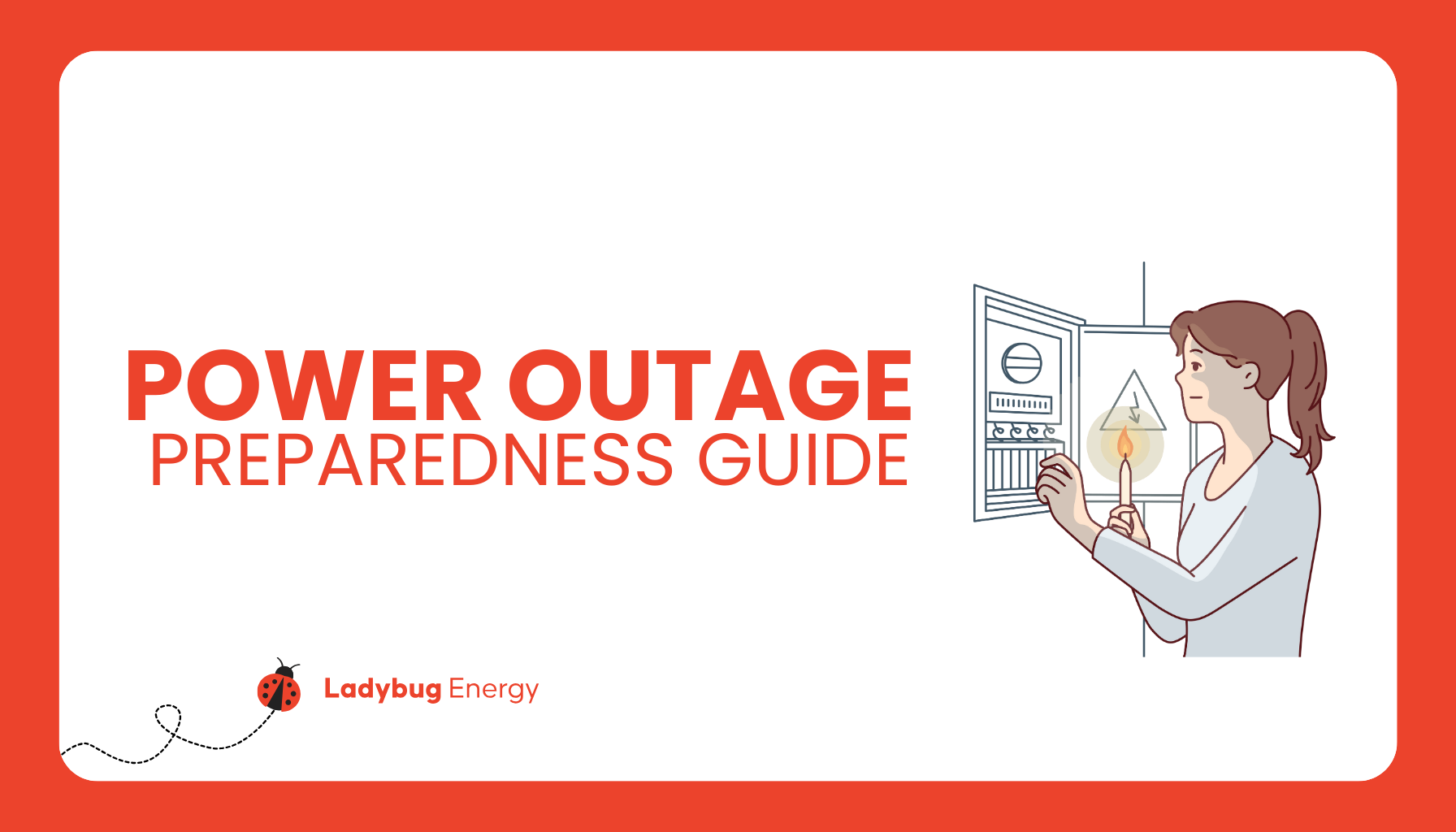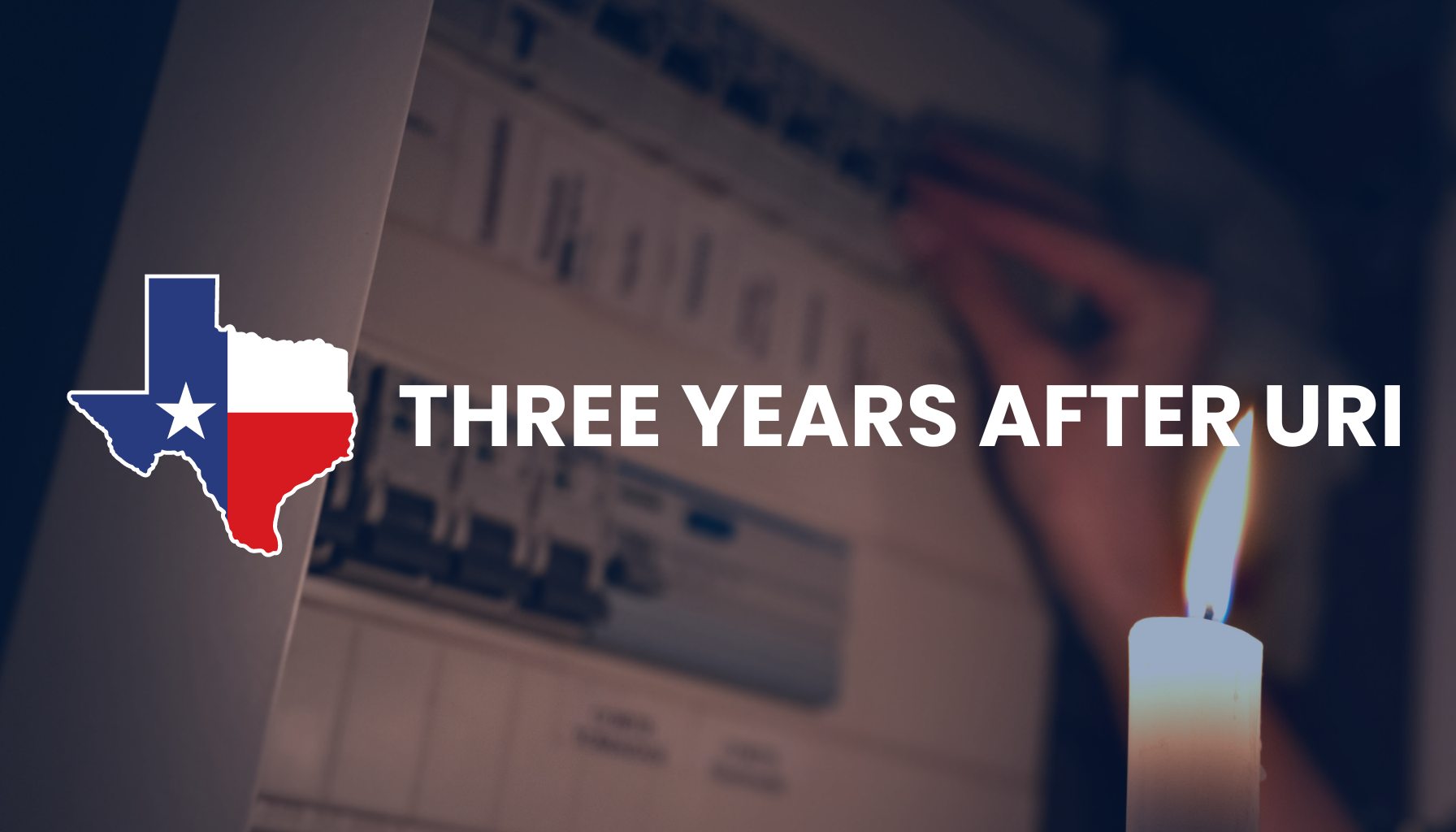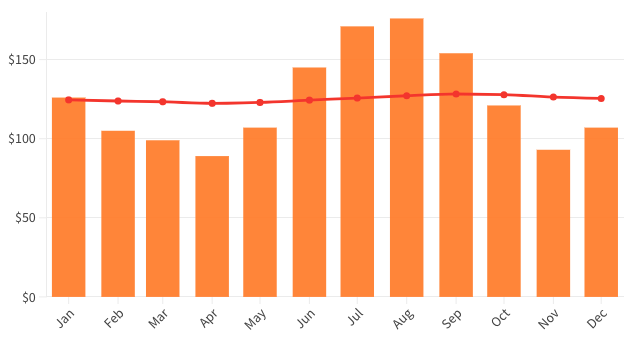
How to Read an Electricity Facts Label (EFL)
Introduction:
Every Texas electricity plan featured on Ladybug Energy comes with an Electricity Facts Label (EFL), but what does this really mean, and why should it matter to you?
At first glance, an EFL might seem like just another piece of paperwork. However, it's a critical piece of your plan that will tell you exactly what it is you're signing up for. It details everything from pricing and fees to the source of your electricity and its renewable content.
In today's blog post, we'll unpack the layers of an EFL, explaining its components in detail, how they affect you and why they matter.
What is an Electricity Facts Label anyway?
An Electricity Facts Label (EFL) is much like a nutritional label for your electricity plan. Standardized in the energy industry, it provides a clear and concise breakdown of what a particular electricity plan entails. This label contains vital information such as pricing, contract terms, and the source of electricity, making it an indispensable tool for consumers looking to understand their plans through and through.
The purpose of an EFL is to bring transparency and clarity to the process of choosing an electricity plan. It lays out the details in a standardized format, allowing consumers to compare different plans on an even playing field, without them needing to dig too deep to piece things together.
In essence, EFLs are designed to empower you, the consumer. They ensure you have all the necessary information at your fingertips, helping you to make an educated decision that best suits your needs. We'll explore each element of the EFL in greater detail below.
Section Breakdown
In the following sections, we'll dissect the Electricity Facts Label (EFL) piece by piece. Our aim is to clarify what each part means and why it's essential for you to understand it. Let's start with perhaps the most critical aspect — the pricing!
Understanding Pricing
The pricing section of an EFL is where you'll find detailed information about how much the electricity plan will cost you. Arguably the most important section, it'll help you budget effectively and avoid any surprises on your bill.
Some key terms you should know are:
- Fixed Rate: This term refers to a pricing structure where the rate you pay for electricity remains constant throughout the term of your contract. It doesn't fluctuate with market conditions, providing a sense of stability in your bills.
- Variable Rate: Unlike fixed rates, variable rates can change based on market conditions. This means that your electricity rate could increase or decrease each month. While this type of plan can offer lower rates during certain periods, it also brings the risk of higher rates when energy prices spike.
Besides fixed and variable rates, the pricing section might also include other fees or credits. For instance, some plans offer discounts for using energy during off-peak hours or charge additional fees for exceeding a certain usage level. We'll tackle all of these shortly.
Contract Terms and Length
The contract terms section of an EFL outlines the duration and conditions of your electricity plan. This is also a very important part of the EFL, since it dictates how long the plan will be active for.
- Contract Length: This specifies how long your agreement with the electricity provider will last, which is typically between 6 and 36 months. Choosing the right length depends on your need for stability versus flexibility.
- Renewal: This part details how your contract will be renewed. Some plans auto-renew, while others may require you to choose a new plan at the end of your term. Be attentive with plans that auto-renew!
- Termination: This clause explains how you can end your contract early and any fees associated with early termination. Understanding this is crucial if you might need to change plans before the contract ends.
- Transferability: This piece of information is particularily important for those who may be moving to a new address soon. Some providers may allow you to transfer your plan to a new location, while others may consider this a termination of the contract (which may also incur fees!).
Fees and Additional Charges
Speaking of fees, alongside additional charges, they can significantly affect the overall cost of your electricity plan. This section of the EFL lists all the extra costs you might incur. Some common fees include:
- Connection/Disconnection Fees: Charged when you start or end service. The amount depends entirely upon each provider and plan.
- Late Payment Fees: If you pay your electricity bill after the due date, you'll be charged a late payment fee. The amount varies on a per-plan basis, as well.
- Minimum Usage Fees: Charged if your energy usage falls below a certain threshold. This doesn't mean you'll be charged more for using less energy though! This is just the minimum that you'll have to pay on a monthly basis, regardless of your usage (or lack thereof).
Electricity Source and Environmental Impact
This section provides information about the source of the electricity in your plan, differentiating between renewable and non-renewable sources. This section is particularly important for environmentally conscious consumers.
- Renewable vs. Non-Renewable: EFLs will specify the percentage of energy sourced from renewable resources like wind, solar, or hydroelectric power versus non-renewable sources such as coal, natural gas, or nuclear power. A higher percentage of renewable energy is generally better for the environment.
- Environmental Impact: This part of the EFL may also include information about the environmental impact of the energy source, such as carbon footprint or other emissions. This data helps consumers understand the ecological consequences of their electricity consumption and choose plans that align with their environmental values.
Understanding Usage Levels
EFLs often include a section on usage levels, which is vital in understanding how your electricity rates can vary based on your consumption.
- Variable Rates Based on Usage: Electricity plans might have different rates for different levels of usage, such as low, medium, and high usage tiers. This means the cost per kilowatt-hour (kWh) could change as your usage increases or decreases.
- Variable Rates Based on Time of Usage: This is a mouthful, but it's straightforward to understand. Some plans may offer cheaper rates at different times of the day or week, which benefit those who can fit their energy demands within that timeframe.
You can estimate your bills more accurately based on your typical electricity usage. It helps in choosing a plan that is cost-effective for your specific consumption pattern. It's paramount that you have a very good estimate of your average electricity consumption and habits!
Common Misunderstandings
When it comes to Electricity Facts Labels and electricity plans in general, there are several common misconceptions that can lead to confusion for consumers. Let's address and clear some of them up:
- Lower Rate Equals Lower Bill: Not necessarily true. As we covered in today's blog post, the overall bill depends on other factors like usage fees and additional charges, not just the rate per kWh.
- All Renewable Plans Are Equal: Different plans vary in the percentage of renewable energy used. Some might be fully renewable, others only partially. Here at Ladybug Energy, we display the renewable energy content of each plan in plain sight!
- Fixed Rates Mean Fixed Bills: A fixed rate stabilizes the rate per kWh, but the total cost at the end of the month will still vary with consumption (and fees if they're applicable!)
- Renewable Energy Plans Are Unstable: This is a terrible myth. The entity solely responsible for maintaining stable electricity in your home is your TDU, not your REP or the energy generators! Your electricity service won't be any more or less stable by enrolling into a plan, renewable or not.
- No Need to Compare EFLs for Same Rate Plans: Even if plans have the same rate, other factors like contract terms and fees can differ, making comparison essential.
Conclusion
So, what should you take away from all of this?
EFLs explain the electricity plan's inner workings, going over important details such as precise pricing structure, thresholds or tiers, plan length, extra fees, etc. They do this without all the legalese you'd find in a typical contract, which greatly facilitates comparing prices and plans.
All the information is laid out in a simple-to-understand structure that focuses on the key points of your plan, letting you focus on comparing and finding the numbers that suit your lifestyle the best.
External Links and Resources
For those who can't get enough — further reading material related to Electricity Facts Labels and other energy concepts can be found within the following official websites:
U.S. Energy Information Administration: A comprehensive resource for energy data, including detailed reports on electricity in the U.S. and educational materials on various energy topics.
Public Utility Commission of Texas: Offers extensive information specific to Texas, including guidelines on electricity plans and understanding EFLs.
Federal Energy Regulatory Commission: Provides insights into the regulations governing electricity markets in the U.S. and resources on how these markets operate.
For an educational resource on energy terms and concepts:
- Energy.gov Glossary: A useful glossary from the U.S. Department of Energy, offering clear definitions of key energy terms and concepts.
These resources will help you gain a more comprehensive understanding of electricity plans, energy regulation, and the various terms used in the industry.
Ready to Explore The Right Electric Plan for You?
And for those who would like to stick around a bit more, how about giving our platform a closer look? You can look up your zip code and start checking out EFLs for your next best plan right away, read a few of our other posts, and even give our podcast a listen while you search!
Do you still have a burning question, comment or feedback regarding today's topic? We'd love to hear from you!

July 4, 2025
Energy Independence Starts at Home: 4 Ways to Declare Your Personal Freedom from High Bills This Fourth of July

June 27, 2025
How Solar Buyback Programs Turn Your Power Into Savings

June 20, 2025
How Smart Home Security Systems Affect Your Energy Usage

June 13, 2025
The Smart Texan’s Guide to Beating the Heat: Budget-Friendly Home Upgrades

June 6, 2025
Is Your Electricity Plan Ready for a Texas Heatwave?

June 3, 2025
Hurricane Season in Texas: How to Prepare for Power Outages

May 29, 2025
No AC? No Problem: How to Stay Cool During a Heatwave Without Air Conditioning

May 27, 2025
Battery Storage at Home: Are They Worth It?

May 23, 2025
Record May Heat in Texas 2025: What It Means for Your Summer Energy Bills

May 20, 2025
The Rising Popularity of EVs: What It Means for Your Electric Bill

May 16, 2025
Beat the Texas Heat: Summer AC Hacks That Save Money

May 2, 2025
The Pros and Cons of Fixed-Rate Electricity Plans: Predictable Power, Possible Pitfalls

April 17, 2025
The Truth About Phantom Loads: How Standby Power Is Draining Your Wallet

April 15, 2025
Save Smarter: A Guide to Free Nights and Free Weekends Energy Plans

April 4, 2025
How to Perform a DIY Home Energy Audit and Cut Your Utility Bills

March 31, 2025
Smart Tips to Lower Your Electricity Bill

March 28, 2025
Net Metering in Texas: Getting Paid for Solar?

March 25, 2025
Time-of-Use Electricity Plans: Are They Right for You?

March 18, 2025
Green Energy 101: Decoding Renewable Electricity Plans

March 14, 2025
Upgrading to a Smart Thermostat: Why You Should Do it and What You Need to Know

February 24, 2025
Power Play: A Step-by-Step Guide to Estimating Your Home's Electricity Usage

February 3, 2025
How Weather Impacts Energy Prices: Understanding the Connection

January 31, 2025
Fixed-Rate vs. Variable-Rate Electricity Plans in Texas: Which One Is Right for You?

January 22, 2025
The Datacenter Boom in Texas: Impact on Consumers and Energy Markets

January 21, 2025
How to Lower Your Electricity Bills and Save Big

January 17, 2025
Everything you need to know about Texas Retail Electric Providers (REPs)

December 23, 2024
10 Common Energy and Electricity Myths Debunked

December 18, 2024
How the Texas Electric Grid Works: Key Differences and Insights

December 13, 2024
Smart Plugs Explained: The Ultimate Guide

December 10, 2024
Understanding Your Electricity Bill in Texas: A Comprehensive Guide

December 4, 2024
Winter Energy Savings: Tips to Lower Your Electricity Bill

November 27, 2024
Your Power To Choose: Setting Up Electricity Service and Switching Providers in Texas

September 24, 2024
Understanding Electricity Deposits: Why They Exist and How to Avoid Them

February 26, 2024
Power Outage Preparedness: A Complete Guide

February 9, 2024
Three Years After Uri: How Texans Can Help Prevent Future Power Outages

January 11, 2024
Best Energy Saving Devices for Your Home: From Smart Tech to LED Bulbs

December 7, 2023
Residential vs. Commercial Electricity Rates

September 18, 2023
How Does Prepaid Electricity Work: A Complete Guide

September 12, 2023
How Long Can a Landlord Leave You Without Electricity: What Tenants and Landlords Need to Know

August 21, 2023
Childproofing Electricity: A Parent's Guide to Safeguarding Kids from Electrical Dangers

July 19, 2023
Does Closing Off Rooms Save Heat? An Energy Efficiency Discussion

July 19, 2023
Is Average Billing Really Worth It?
May 23, 2023
ESID Lookup in Texas
March 2, 2023